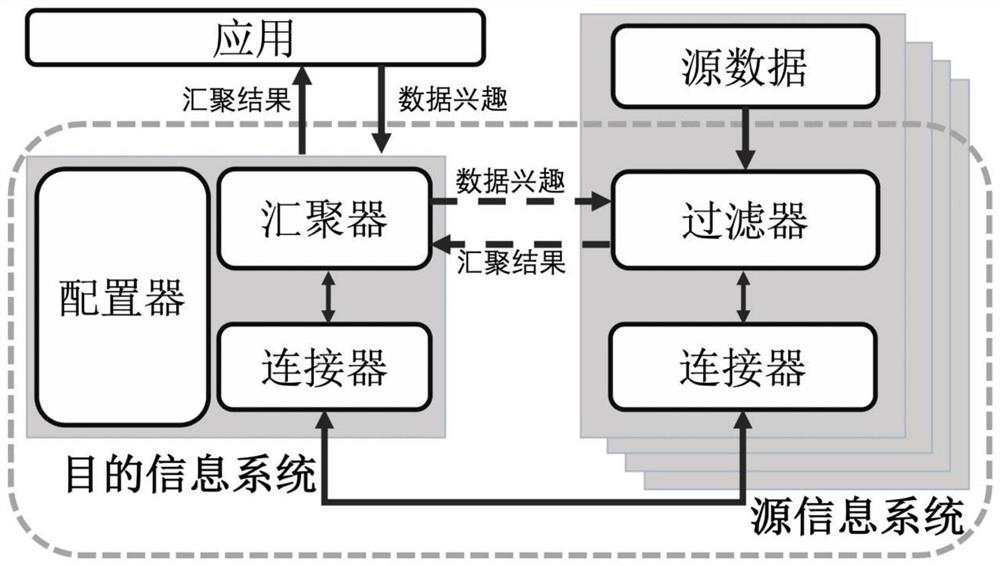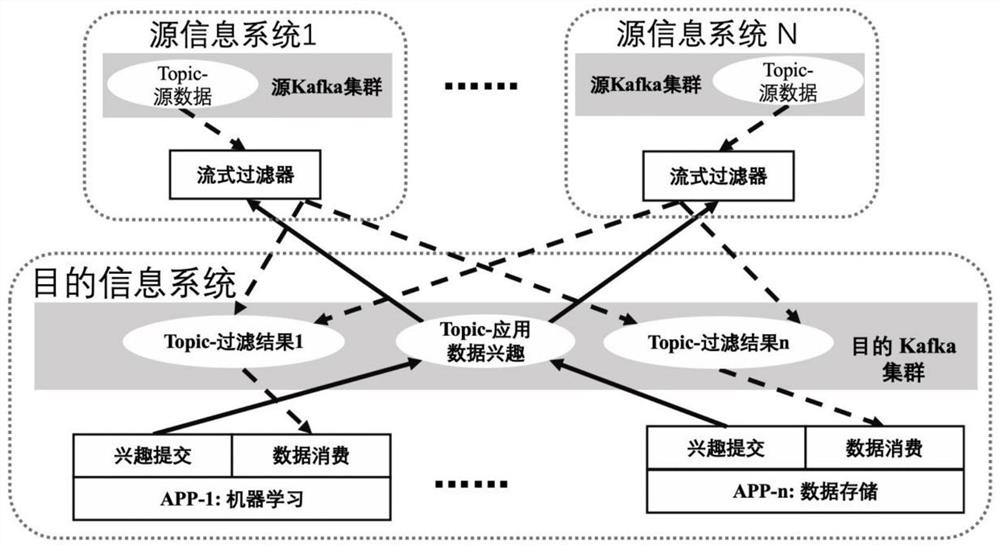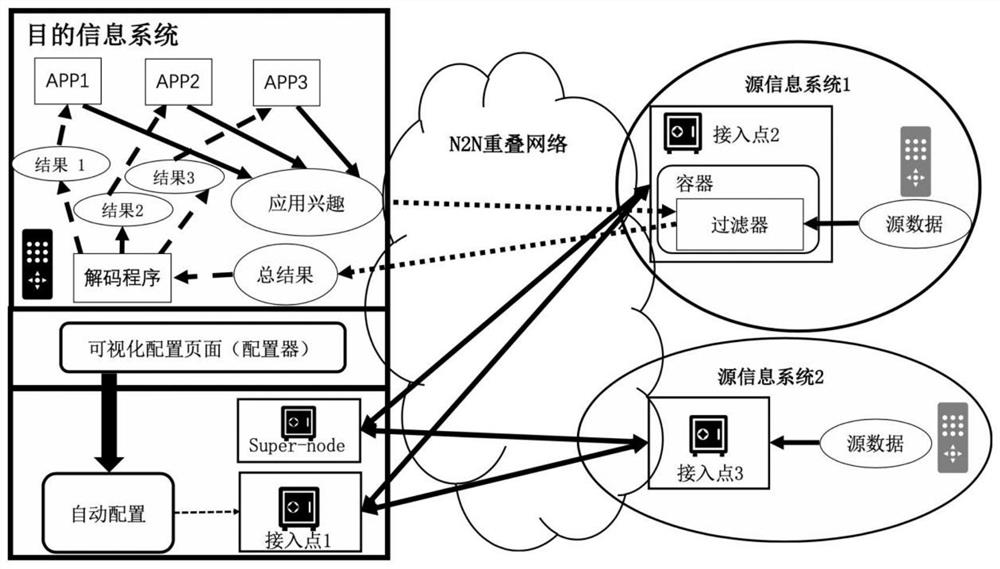Cross-domain information system-oriented real-time on-demand data aggregation method and system
An information system and data aggregation technology, applied in the direction of structured data retrieval, electronic digital data processing, database management system, etc., can solve the problems of not being able to effectively deal with distribution, autonomous real-time and flexibility, increasing network control and information leakage , No problems such as data aggregation framework and system were raised, to achieve the effect of rapid expansion, reduction of network load pressure, and rapid component update
- Summary
- Abstract
- Description
- Claims
- Application Information
AI Technical Summary
Problems solved by technology
Method used
Image
Examples
Embodiment 1
[0043] A real-time on-demand data aggregation system oriented to cross-domain information systems according to the present invention includes: an aggregation terminal deployed in a target information system and multiple source terminals deployed in multiple source information systems;
[0044] The source includes a filter and a connector;
[0045] The converging end includes a connector, a converging device and a configurator;
[0046] The converging-end connector and the source-end connector establish a virtual local area network tunnel to communicate with each other to form an overlay network;
[0047] The aggregator collects the aggregation requirements of various applications in the destination information system for the source data, forms an aggregation rule, and distributes the aggregation rule to all source-end filters; aggregates the data satisfying the aggregation rule in the source information system;
[0048] The filter performs a filtering operation on the data in...
Embodiment 2
[0069] Embodiment 2 is a modification of embodiment 1
[0070] 1 frame structure
[0071] like figure 1 As shown, the real-time on-demand data aggregation framework proposed by the present invention consists of two parts: the sink part deployed in the destination information system and the source part deployed in the source information system, wherein the source part There can be multiple, deployed in different source information systems. Each source consists of two modules: a filter and a connector, and each sink consists of three modules: a connector, an aggregator and a configurator.
[0072] 2 module process
[0073] (1) Connector
[0074] Both the sink end and the source end contain a connector, and a virtual local area network tunnel can be established between the connectors to communicate with each other, thereby forming an overlay network. The overlay network can shield the complex LAN design of each information system at the bottom layer, and with the permission ...
PUM
 Login to View More
Login to View More Abstract
Description
Claims
Application Information
 Login to View More
Login to View More - Generate Ideas
- Intellectual Property
- Life Sciences
- Materials
- Tech Scout
- Unparalleled Data Quality
- Higher Quality Content
- 60% Fewer Hallucinations
Browse by: Latest US Patents, China's latest patents, Technical Efficacy Thesaurus, Application Domain, Technology Topic, Popular Technical Reports.
© 2025 PatSnap. All rights reserved.Legal|Privacy policy|Modern Slavery Act Transparency Statement|Sitemap|About US| Contact US: help@patsnap.com



